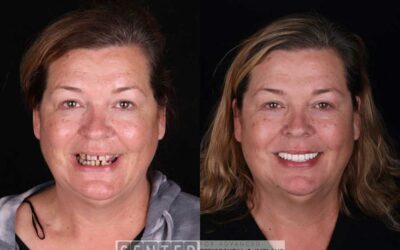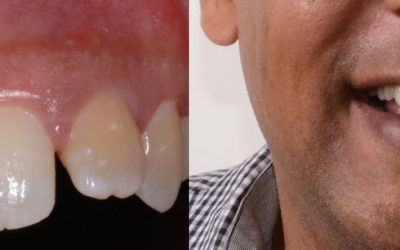Why Choose A Fixed Bridge Instead Of Removable Dentures
Do you have missing teeth? Depending on whether you need to replace multiple teeth or a single missing tooth, and if adjacent teeth are healthy, your restorative dentistry options can range from full and partial dentures to a dental bridge or dental implants and full arch dental implants.
With so many options to choose from, replacing missing teeth can make some people feel a little overwhelmed. For simplicity’s sake, we’re going to compare the difference between a fixed bridge and dentures. As you grow more familiar with the advantages of each, you can understand when abutment teeth or multiple teeth restorations may be recommended as restorative dentistry procedures.
Traditional Fixed Bridges
If you have teeth missing in one area of your mouth, but there are healthy teeth on either side of it, a bridge is a traditional treatment choice.
Bridges usually replace lost teeth by anchoring on top of natural teeth on either side of the missing one. If you have good oral health and are free of gum disease, bridges are usually an option.
Bridges are best for tooth loss involving one or two teeth at a time. If more are missing, you will probably need an alternative treatment such as a partial or implant-supported bridge.
Although bridges can be made of various materials, porcelain is usually requested. That way the crowns blend in with other teeth in your mouth.
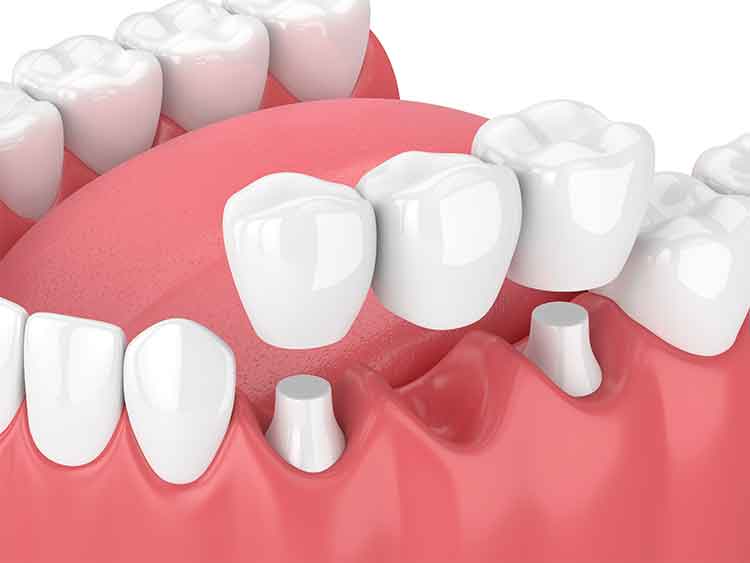
Implant-Supported Fixed Bridge
If you don’t have remaining teeth to anchor the bridge, we can use a pair of implants in that space to support a multi-tooth custom made bridge. That way you can replace missing teeth without needing a removable dental bridge/partial denture that comes out at night.
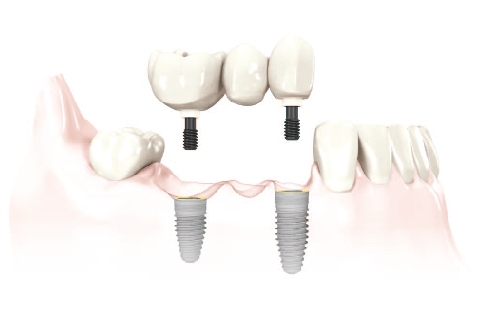
Dental Bridge vs. Partial Dentures
Let’s say you’re considering a removable dental bridge. Technically what that is, is a removable partial denture. Partials replace a few teeth at a time instead of all of them, like full removable dentures.
Unlike a fixed bridge, you remove your prosthesis at night before you go to bed. A partial denture “bridge” (as some people refer to them) is a fast and economical way to quickly restore your smile at a lower cost.
On the other hand, a porcelain bridge doesn’t need to be taken out at night. And you can place it on top of natural teeth or dental implants. The porcelain material is usually more attractive than acrylic, giving it an advantage when you compare more economical dentures vs. bridges.
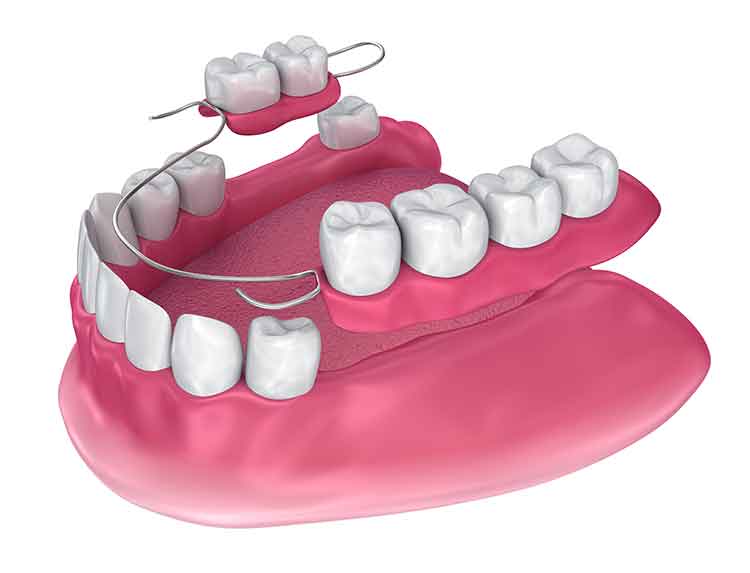
When are Dentures Recommended?
Let’s say you’re looking for a fixed or removable dental bridge, but you need to replace all of your teeth at once. In that case, a fixed bridge is no longer an option. Bridges only replace a handful of teeth at one time. In this situation, you would want removable dentures (or fixed dentures on implants) to restore your entire arch of teeth.
Fortunately, there are fixed dentures that are designed to look more like a hybrid, extended denture bridge. These are non-removable denture implants, unlike the traditional “plates” you hear about people taking out at night.
When it comes to dentures vs. bridges, we rarely recommend removing your teeth to get dentures. But if you need a removable denture, implants can help stabilize your prosthesis for improved comfort.
Gum and Bone Health Around Bridges and Dentures
Whether you’re interested in a dental implant, dental bridges, or dentures, your new “false teeth” need a firm foundation to support them. Fixed bridges rely on stable gum and bone health between your remaining natural teeth. But if you do have extensive bone loss or no teeth to support a bridge, you can wear a denture or get fitted for removable denture implants (overdentures.)
Comparing dentures vs. bridges may not be necessary if you don’t have the right foundation to support bridges or implant fixed dentures. Removable prosthetics or bone grafting are usually your only options.
“I Don’t Qualify for a Bridge.”
If you don’t have teeth to support a fixed bridge, a partial (“removable dental bridge”) or implants are probably best. In order to remain secure, any removable dentures still need to fit closely against your gums. Even though they’re technically called partials, a denture bridge offers an economical alternative to full dentures for someone who may not qualify for something fixed. Dentures aren’t always the best choice, but decisions regarding dentures vs. bridges need to take into consideration the unique preferences of the patient. When possible, stabilized or fixed dentures are usually best.
Incorporating Implants Into Your Treatment Plan
Implants can be used in a wide variety of tooth replacement cases. As long as you have good bone support, your new “teeth” will provide a stable bite that looks and feels like a natural smile. Implants are—by design—like strong teeth. If you need one false tooth, two crowns in a row, or several teeth at a time, implants are the best option for tooth replacement.
Full Dentures vs. Implants
Dental implants are permanent, functional, artificial teeth that let you speak confidently and enjoy how your smile looks. You won’t have to remove them at night to soak them in denture cleansing solution or use pastes to keep them secure. And best of all, each artificial root can work with one another (and special, small metal attachments) to restore an entire dental arch of teeth when needed.
If you have good dental health, implant supported dentures are one of the best tooth replacement options to consider. Each artificial root is placed by our Los Angeles implant dentist to support a multi-tooth restoration, restoring other teeth all at the same time.
Get a Professional Opinion
The Center for Advanced Periodontal and Implant Therapy offers dental implants, implant bridge restorations, and more. If you’re worried about a missing tooth and your gums are in good health, contact us to discuss your replacement options.
Are you a new patient? Call our Los Angeles implant office to get started.
You May Also Like...
Elevating Dental Implant Standards in Los Angeles for Patient Safety
Sarah's Implant Journey: A Testament to Transformation Meet Sarah. Three years ago, Sarah avoided mirrors, rarely...
Comparing Immediate Load vs. Traditional Dental Implants
Dental implants have revolutionized the way we replace missing teeth. They're not just prosthetics; they restore the...
Overcoming Dental Anxiety for Fear-Free Dental Implants
Dental anxiety is a common concern shared by many patients. It's not just about the fear of pain; it's also about the...

